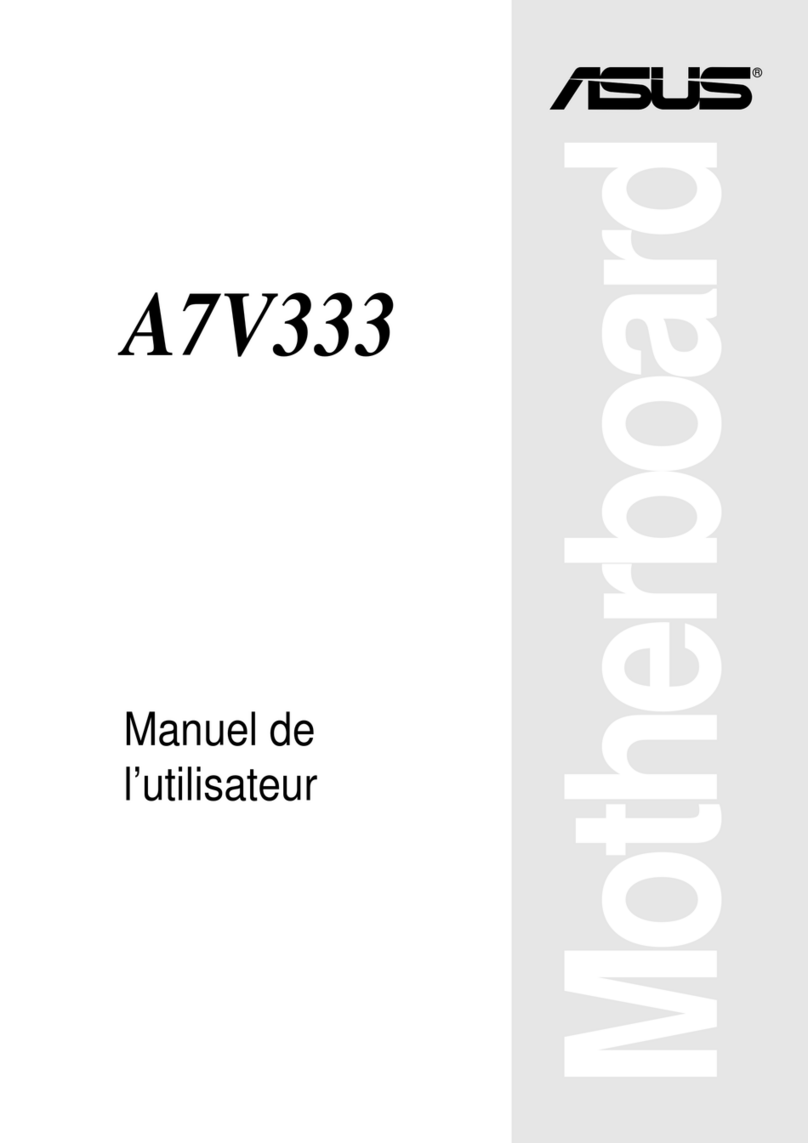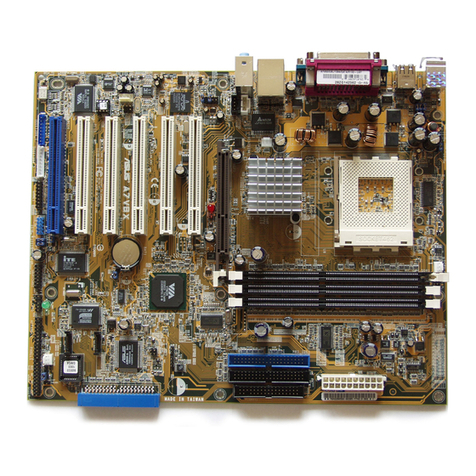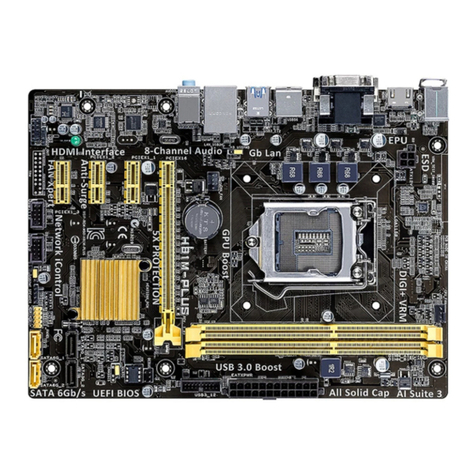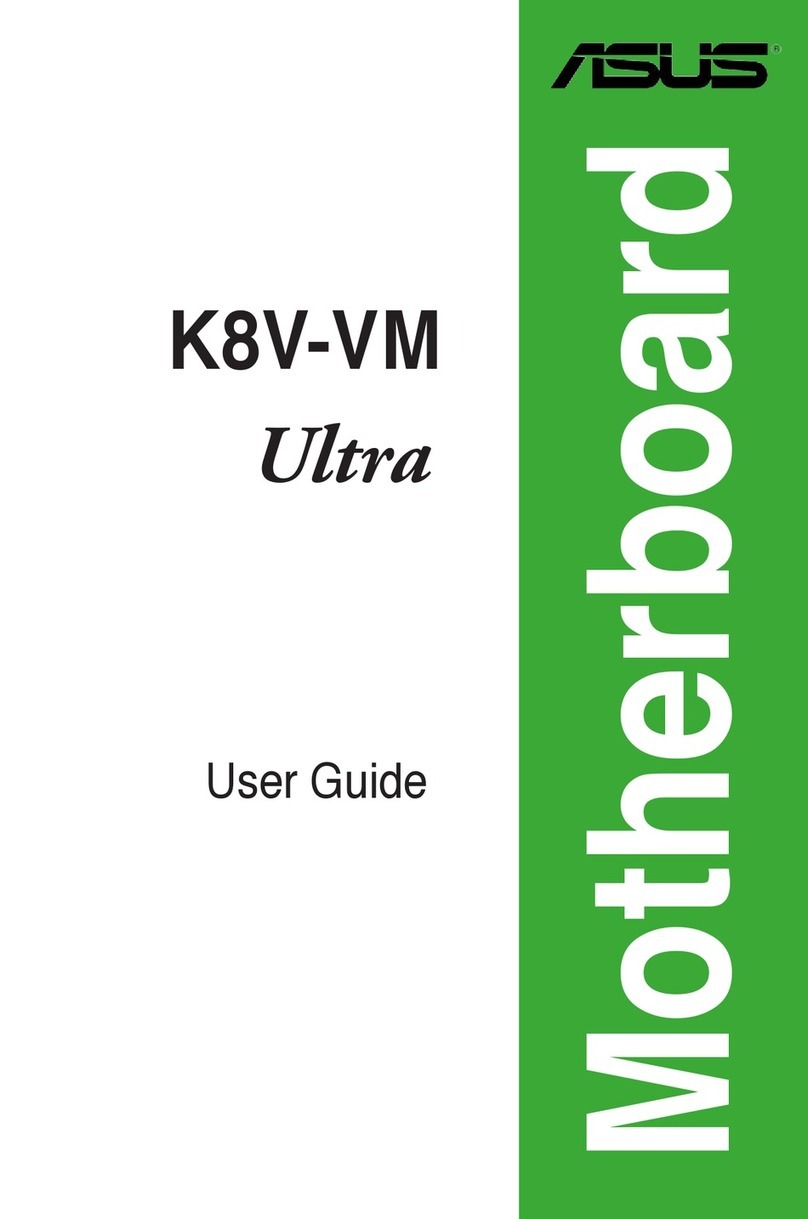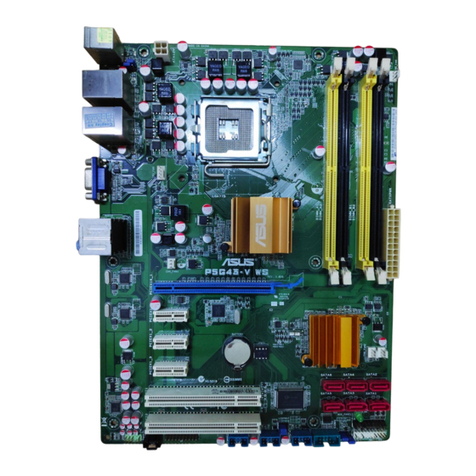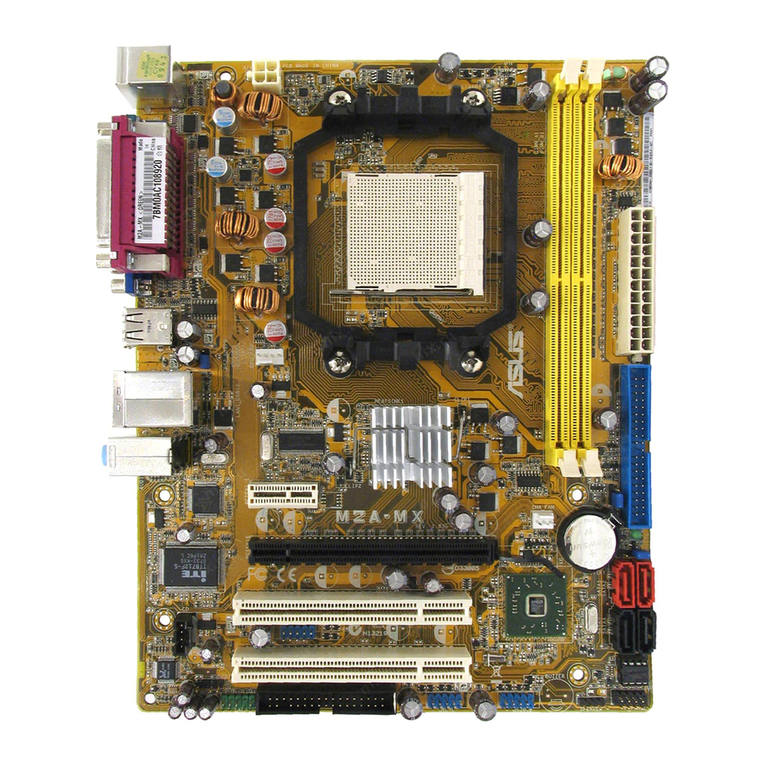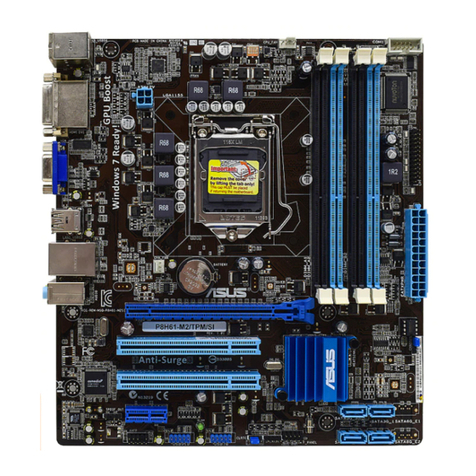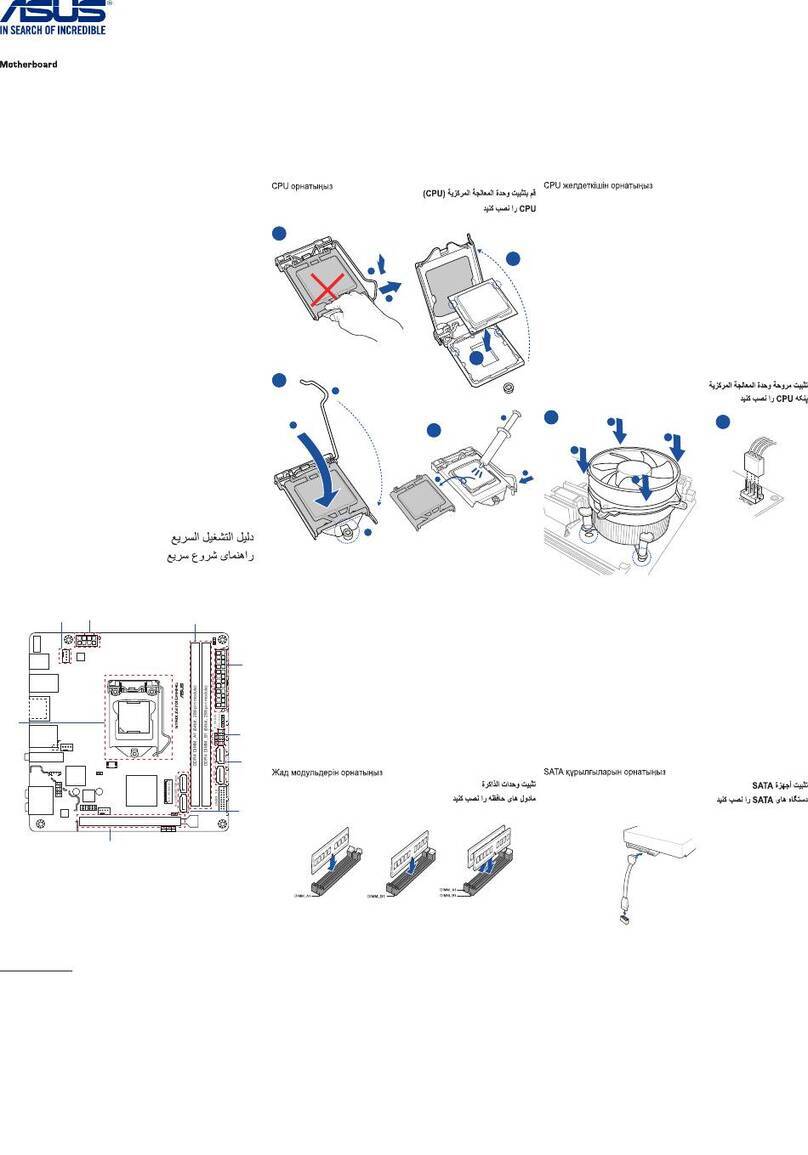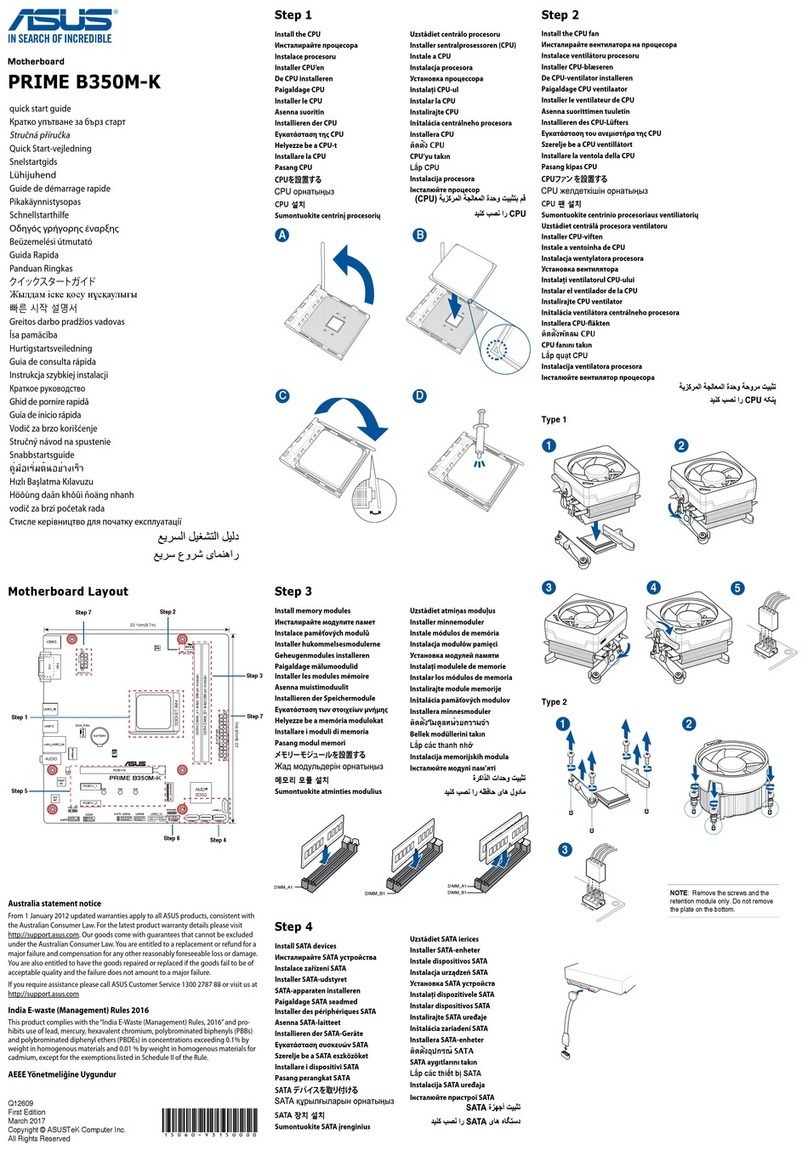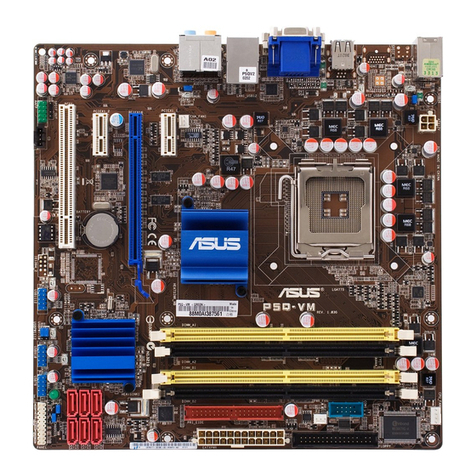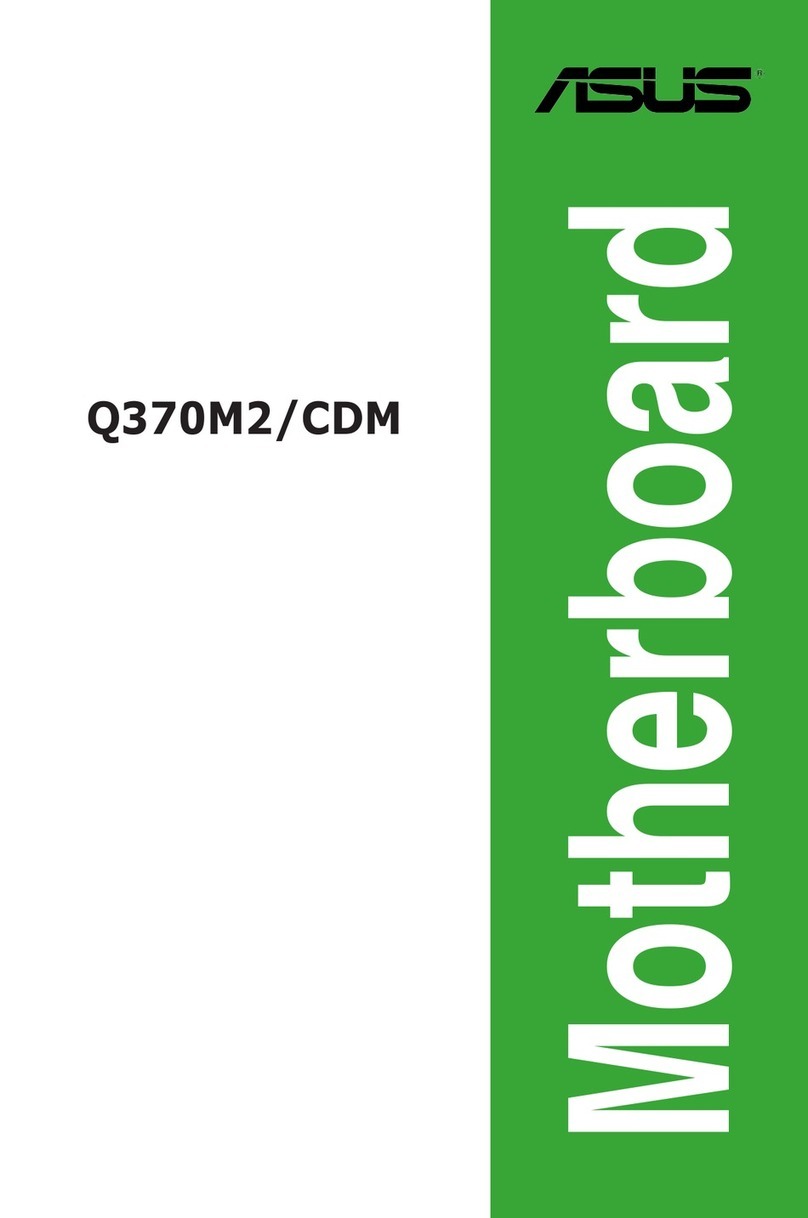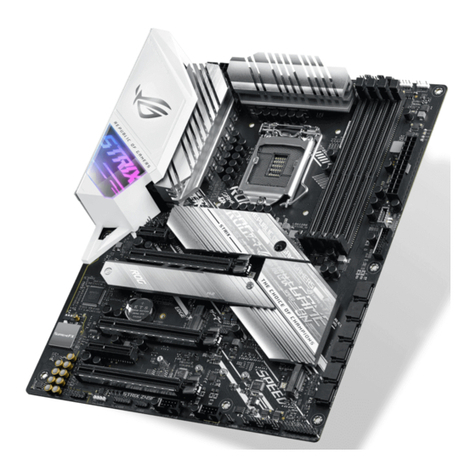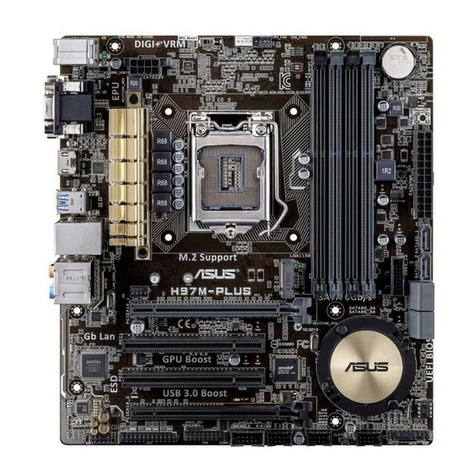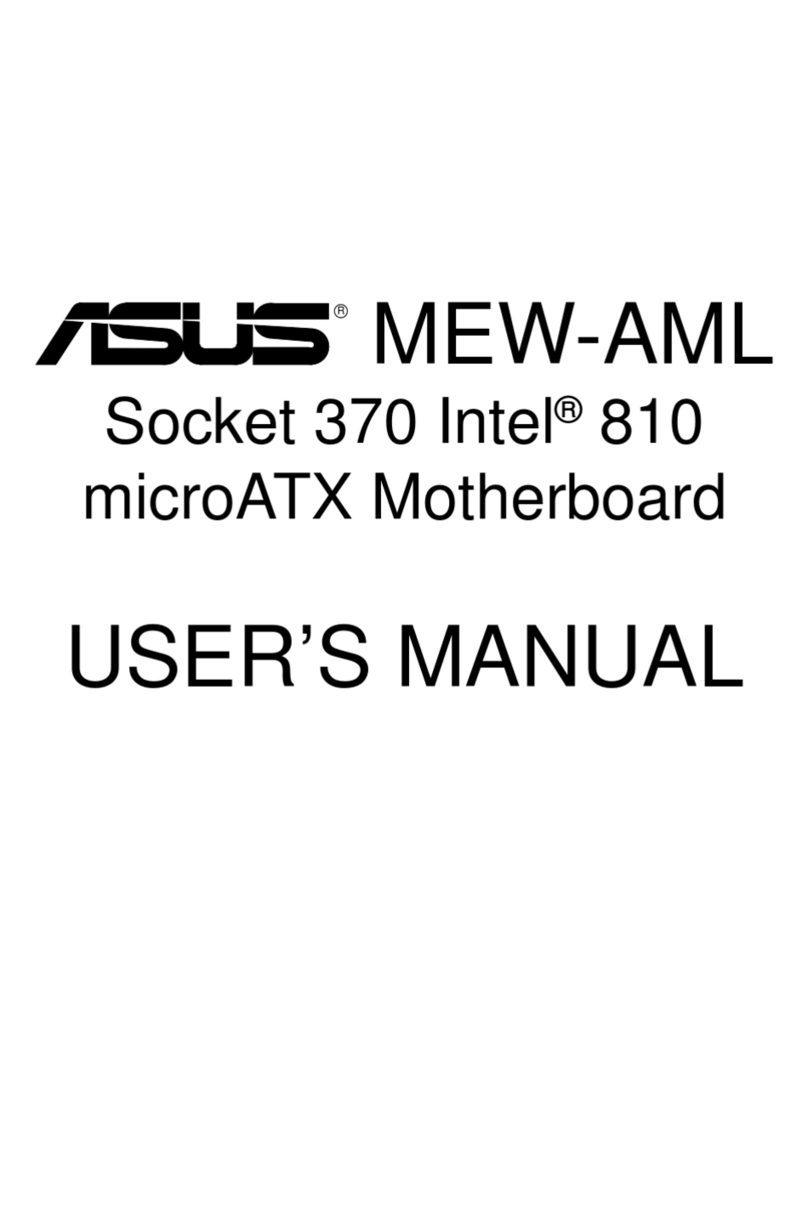
ASUS P/I-P55T2P4 User's Manual
II
USER'S NOTICE
Product Name: ASUS P/I-P55T2P4
Manual Revision: 3.11
Release Date: May 1997
No part of this product, including the product and software may be reproduced,
transmitted, transcribed, stored in a retrieval system, or translated into any lan-
guageinanyformbyanymeanswithouttheexpresswrittenpermissionofASUSTeK
COMPUTER INC. (hereinafter referred to as ASUS) except documentation kept
by the purchaser for backup purposes.
Specifications are subject to change without notice. ASUS provides this manual
“as is” without warranty of any kind, either express or implied, including but not
limited to the implied warranties or conditions of merchantability or fitness for a
particular purpose. In no event shallASUS be liable for any loss or profits, loss of
business, loss of use or data, interruption of business, or for indirect, special, inci-
dental, or consequential damages of any kind, even if ASUS has been advised of
the possibility of such damages arising from any defect or error in this manual or
product. ASUS may revise this manual from time to time without notice.
Products mentioned in this manual are mentioned for identification purposes only.
Product names appearing in this manual may or may not be registered trademarks
or copyrights of their respective companies.
• Intel, LANDesk, and Pentium are registered trademarks of Intel Corporation.
• IBM is a registered trademark of International Business Machines Corp.
• Symbios is a registered trademark of Symbios Logic Corporation.
• Windows and MS-DOS are registered trademarks of Microsoft Corporation.
• Sound Blaster AWE32 and SB16 are trademarks of Creative Technology Ltd.
• Adobe andAcrobat are registered trademarks of Adobe Systems Incorporated.
The product name and revision number are both printed on the board itself. Manual
revisions are released for each board design represented by the digit before and
after the period of the manual revision number. Manual updates are represented by
the third digit in the manual revision number. For previous or updated manuals,
BIOS, drivers, or product release information you may visit the ASUS home page
at http://www.asus.com.tw/ or contact ASUS from the following page.
© Copyright 1997 ASUSTeK COMPUTER INC. All rights reserved.
